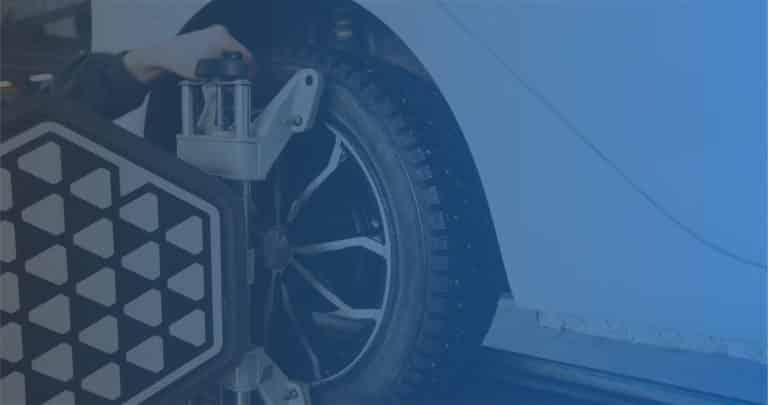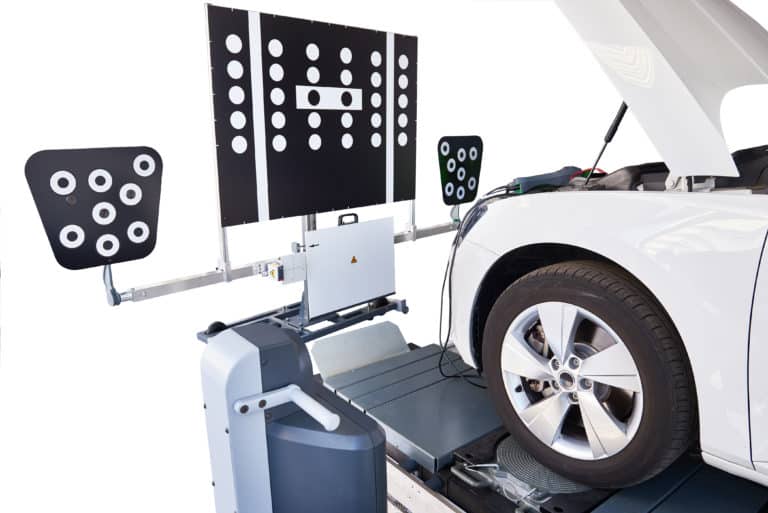Electronic Stability Control (ESC) is one of those technologies that’s quietly changed driving for the better. You won’t find it talked about as much as self-driving systems or flashy infotainment, but it plays a foundational role in keeping modern vehicles safe and responsive. Whether a driver is navigating challenging weather, making a sharp avoidance maneuver, or simply enjoying a spirited drive, ESC is working in the background to help keep drivers in control. In this article, we’ll break down what ESC does, how it works, and why it’s a must-know system for anyone who cares about the intersection of safety and performance. We’ll also look at what ESC means for repair, diagnostics, and its role in the broader landscape of vehicle technology and ADAS.
What is ESC in a Car?
Electronic Stability Control (ESC) is an advanced safety feature that automatically assists drivers in maintaining control of the vehicle during extreme steering maneuvers. It works by detecting when tires lose traction and reduces the risk of skidding or spinning out, especially in slippery conditions.
ESC relies on onboard sensors and computer logic to continuously monitor steering input, wheel speed, and yaw rate. It determines if the vehicle is deviating from the driver’s intended path and reacts in real-time. This active correction feature is what makes ESC a major leap forward in modern automotive safety.
Real-World Relevance:
ESC is most valuable in emergency scenarios. Imagine the car swerving to avoid an obstacle on a rainy road. Without ESC, a vehicle could fishtail or spin out. With ESC, the system actively manages wheel slip and corrects the trajectory, often before it’s realized what’s happening.
Since 2012, ESC has been mandatory in all new passenger vehicles sold in the U.S. It’s a proven lifesaver, significantly reducing single-vehicle crashes and fatalities. It’s especially effective for SUVs and trucks, which are more prone to rollover incidents.
The Growing Role in Safety:
ESC started as a luxury feature but is now considered a cornerstone of vehicle safety, much like seat belts or airbags. As vehicles become smarter and more autonomous, ESC has evolved to work alongside Advanced Driver Assistance Systems (ADAS) features like Lane Keep Assist, adaptive cruise control, and collision mitigation systems.
ESC vs. ABS and Traction Control: What’s the Difference?
It’s common to confuse ESC with systems like Anti-lock Braking System (ABS) and traction control. While they all aim to improve stability and safety, each system serves a distinct function. In that sense, ESC is a more comprehensive system. It’s not just about stability during acceleration or braking—it’s about maintaining full control of the vehicle in complex or unexpected driving conditions. Below, we’ve provided brief descriptions of each ADAS feature:
ABS – Anti-lock Braking System
ABS prevents the wheels from locking up during hard braking. By pulsing the brakes rapidly, it helps maintain steering control, allowing drivers to swerve around obstacles rather than skid in a straight line.
TCS prevents wheel spin during acceleration, particularly on slippery roads. It reduces power or applies brake force to specific wheels if it detects any issues with traction.
ESC – Electronic Stability Control
ESC builds upon both ABS and traction control. While those systems help in braking and acceleration scenarios, ESC focuses on directional control. If the car begins to understeer or oversteer, ESC corrects the path using a combination of selective braking and throttle management.
ABS and TCS handle linear stability by braking and accelerating in a straight line. ESC, on the other hand, adds lateral stability by helping the car maintain its intended direction in curves or sudden swerves.
ESC in ADAS Systems
ESC doesn’t just work on its own. In modern vehicles, it plays a key role within the broader ADAS ecosystem. It supports or is supported by several ADAS features that enhance vehicle awareness and response. Here are the ADAS features that support ESC the most:
- Lane Keep Assist and Lane Departure Prevention: ESC assists with minor course corrections initiated by these systems. If a vehicle drifts toward the shoulder and the driver doesn’t react, lane keep assist may gently steer it back into the lane. If tire grip is limited, ESC keeps the maneuver stable.
- Collision Avoidance and Emergency Steering: If the ADAS system triggers automatic emergency braking or avoidance, ESC manages traction to prevent secondary skids or overcorrection. It smoothly deploys these interventions, maintaining control even in unsafe conditions.
- Adaptive Cruise Control and Curve Speed Management: ESC works behind the scenes to manage cornering when the vehicle adjusts speed for curves. It maintains the vehicle’s stability when the system modulates the throttle and brakes.
- Road Surface Adaptation and Weather Responsiveness: ESC also plays a key role when ADAS features respond to changing road conditions. For example, if the car detects rain, snow, or ice through traction sensors or predictive weather data, ESC dynamically adjusts its thresholds to account for reduced grip. This adaptive behavior makes sure that systems like lane keeping and automatic emergency steering remain effective even when the road friction is dicey. Without this input from ESC, many ADAS systems would overcorrect or fail in real-world conditions.
Many of these advanced features could introduce more risk than reward without the help of ESC. The system acts as a stability safety net, allowing ADAS features to take action while keeping the vehicle under control, even during aggressive or emergency maneuvers.
ESC, Repairs, and Vehicle Calibration
Just like cameras and radar sensors in ADAS systems, ESC systems must be maintained and sometimes calibrated, especially after certain types of repairs or part replacements.
When Calibration Is Required:
ESC relies on yaw sensors, steering angle sensors, and wheel speed sensors. If any of these components are replaced or disturbed, for example, after a suspension repair, alignment, or airbag deployment, the ESC system may need recalibration. Some vehicles will flash a dashboard warning light or display an error code if calibration is off.
Repair Considerations:
Diagnosing ESC issues often involves checking sensor alignment, software codes, and vehicle communication networks. A scan tool can read trouble codes and sensor values, but some situations require advanced diagnostics or factory calibration tools.
Some of the most common repair triggers include:
- Replacing the steering rack or wheel speed sensors
- Performing wheel alignment or changing tire sizes
- Body or frame repairs that shift the positions of ADAS components
Why DIY Isn’t Always Enough
Modern ESC systems are deeply integrated with the vehicle’s computer network. Even if the mechanical part is replaced correctly, an incorrect sensor value or calibration angle can cause the system to misfire, or worse, not work at all during a critical moment. That’s why many repair shops now include ESC calibration as part of their ADAS service package.
Learn More About ESC Systems or Start Your Own ADAS Sensor Calibration Center
Electronic Stability Control (ESC) may not generate headlines like self-driving cars or over-the-air updates, but it’s one of the most innovative and most proven systems under the hood. It’s also a major stepping stone into the world of ADAS, where automation and driver assistance come together to enhance safety and performance. Car ADAS Solutions offers a complete turnkey solution for launching and expanding ADAS calibration centers. From facility design and OEM-compliant equipment selection to hands-on technician training and daily operational support, we help you get fully set up in just 45 days. Contact us today to learn more!
Electronic Stability Control FAQs
What exactly does Electronic Stability Control (ESC) do?
ESC continuously monitors steering input, wheel speed, and vehicle rotation to detect loss of control. When the system senses understeer or oversteer, it automatically applies brake pressure to specific wheels and adjusts engine power to help the vehicle maintain its intended path.
How is ESC different from ABS and traction control?
ABS prevents wheel lock during braking, and traction control limits wheel spin during acceleration. ESC goes a step further by managing the vehicle’s lateral stability. It corrects both braking and steering issues in real time, ensuring the vehicle stays pointed in the direction the driver intends, even during sharp maneuvers or slippery conditions.
When does ESC require calibration or reprogramming?
ESC calibration is necessary any time components like the steering angle sensor, wheel speed sensors, or yaw sensor are replaced or adjusted. It may also be required after suspension work, alignments, or collision repairs that alter vehicle geometry.
What happens if ESC is not recalibrated after repairs?
An uncalibrated ESC system can misinterpret sensor data, leading to delayed or incorrect corrective actions. This can cause the system to activate unnecessarily, or fail to engage when needed, compromising safety and performance.
How does ESC integrate with other ADAS features?
ESC serves as a stability foundation for many ADAS systems, including lane keep assist, adaptive cruise control, and collision avoidance. These systems rely on ESC to maintain traction and directional control during automated braking or steering corrections, ensuring smooth and safe operation under real-world conditions.







